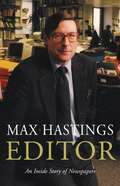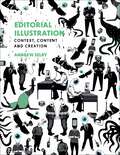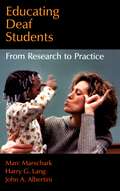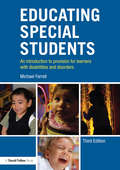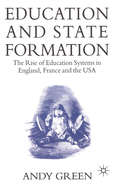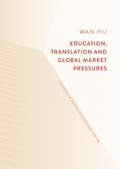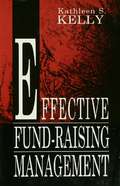- Table View
- List View
Editor: A Memoir
by Max HastingsWinner of the Somerset Maugham Award.In February 2002 Max Hastings retired from his position as a 'Fleet Street' Editor. His is an enormously illustrious career which started in 1985, when he was offered the Editorship of a national institution - the Daily Telegraph - in a surprise move by its owners. This candid memoir tells the story of what happened to him, and to a great newspaper, over the next decade. It is all here: the rows with prime ministers, the coverage of great events, the daily routine. Max Hastings describes his complex relationship with his proprietor, Conrad Black. He offers an extraordinary perspective on the decline of John Major, the troubles of the Royal Family, the difficulties of dealing with lawyers and celebrities, statesmen and stars. Editor: A Memoir is above all the story of the excitement and exhilaration of almost 10 years at the helm of one of the greatest newspapers in the world.
Editorial and Opinion: The Dwindling Marketplace of Ideas in Today's News (Democracy and the News)
by Steven M. HallockIn 1930 there were 288 competitive major newspaper markets in the United States. Today, there are fewer than 30. The diminishing diversity of opinion and voices in newspapers editorials is taking place even as technological advances seemingly provide more sources of (the same) information. As Hallock shows, the concentration of media ownership in fewer and fewer hands allows those individuals and entities an inordinate amount of influence. In this intriguing book, he examines 18 newspaper markets to show us exactly how and where this troubling trend is occurring, what it means for the political landscape, and, ultimately, how it can affect us all.Newspaper editorials say a lot about the society in which we live. They are not just an indication and reflection of the issues of the day and of which way the political wind is blowing. They are also a part of the political climate that sets the agenda for politicians, and helps them discern which are the hot-button issues and which side people are on. Journalists and politicians enjoy a level of symbiosis in their relationships-they influence each other indirectly. It therefore follows that when fewer ideas, and a narrower range of opinions, are expressed in the nation's newspapers, there is a real danger that our thinking can become more simplistic as well.
Editorial Illustration: Context, content and creation
by Andrew SelbyAcross digital and print media, editorial illustrators create visuals to support text and convey ideas, but there is more to these illustrations than meets the eye.Internationally-recognised illustrator and educator Andy Selby takes you through the importance of context and content when responding to editorial illustration briefs, explaining how understanding of visual communication concepts leads to more successful illustrations - all while under the time pressure of editorial briefs. Covering ideation, development and execution, this book includes:- A short history of illustration as a political and social tool- How to use visual language, symbolism and satire and to what purpose- Representation of identity, ethics and society - both for impact and sensitive designs- Research, commercial judgement and experimentation- Professional conduct, self-promotion, responsibilities and plagiarism So whether you're illustrating a news story, summarising new scientific discoveries or creating an image for a magazine cover, Editorial Illustration will give you the skills to produce striking commercial designs on time and to brief.
Editorial Illustration: Context, content and creation
by Andrew SelbyAcross digital and print media, editorial illustrators create visuals to support text and convey ideas, but there is more to these illustrations than meets the eye.Internationally-recognised illustrator and educator Andy Selby takes you through the importance of context and content when responding to editorial illustration briefs, explaining how understanding of visual communication concepts leads to more successful illustrations - all while under the time pressure of editorial briefs. Covering ideation, development and execution, this book includes:- A short history of illustration as a political and social tool- How to use visual language, symbolism and satire and to what purpose- Representation of identity, ethics and society - both for impact and sensitive designs- Research, commercial judgement and experimentation- Professional conduct, self-promotion, responsibilities and plagiarism So whether you're illustrating a news story, summarising new scientific discoveries or creating an image for a magazine cover, Editorial Illustration will give you the skills to produce striking commercial designs on time and to brief.
Edmund Husserl Bibliography (Husserliana: Edmund Husserl - Dokumente #4)
by Steven SpileersThis bibliography contains the publications of Husserl and the main secondary literature on Husserl, from Husserl's earliest publication (1887) till today (1997). As the collection of material was conduded in lune 1997, the list of publications for the year 1997 is of course incomplete. In this bibliography publications in the following languages have been induded: German, English, French, Italian, Spanish, Portuguese and Dutch - for both primary and secondary literature. Since this bibliography has been based primarily on the consultation of the induded documents (and not restricted to copying already existing bibliographies), it was not possible to indude publications in languages other than those mentioned. The bibliography has been constructed in the following way: 1. The list of Husserl's works and secondary literature by individual authors is preceded by a list of all edited volumes in which a text by or on Husserl is published. This list is ordered chronologica11y and runs from 1921 ti11 1997 (inclusive). Edited volumes of the same year are classified according to language, and this in the order mentioned above: German, English, French, etc. Edited volumes with a title in more than one language are classified according to the above order of languages (this of course concerns only the title of the edited volume, not the title(s) of the individual contributions). This order is maintained throughout the other parts of the bibliography.
Educating Deaf Students: From Research to Practice
by Marc Marschark Harry G. Lang John A. AlbertiniOver the past decade there has been a significant increase in interest from educators and the general public about deafness, special education, and the development of children with special needs. The education of deaf children in the United States has been seen as a remarkable success story around the world, even while it continues to engender domestic debate. In Educating Deaf Students: From Research to Practice, Marc Marschark, Harry G. Lang, and John A. Albertini set aside the politics, rhetoric, and confusion that often accompany discussions of deaf education. Instead they offer an accessible evaluation of the research literature on the needs and strengths of deaf children and on the methods that have been used-successfully and unsuccessfully-to teach both deaf and hearing children. The authors lay out the common assumptions that have driven deaf education for many years, revealing some of them to be based on questionable methods, conclusions, or interpretations, while others have been lost in the cacophony of alternative educational philosophies. They accompany their historical consideration of how this came to pass with an evaluation of the legal and social conditions surrounding deaf education today. By evaluating what we know, what we do not know, and what we thought we knew about learning among deaf children, the authors provide parents, teachers, and administrators valuable new insights into educating deaf students and others with special needs.
Educating Special Students: An introduction to provision for learners with disabilities and disorders
by Michael FarrellEducating Special Students is the definitive guide to evidence based practice and professionally informed approaches to provision for special students. Now in its third edition, the book sets out ideas of best practice relating to different disabilities and disorders, helpfully discussing what might constitute effective provision. This edition has been updated to take account of new ways of classifying disabilities and disorders, and recent developments in research and practice, including the 2014 SEND Code of Practice (England) and the Diagnostic and Statistical Manual of Mental Disorders Fifth Edition DSM-5™. A new appendix provides information on basic anatomy and physiology. International in scope, the book explores issues relating to: intellectual disability (profound, moderate to severe, and mild) sensory impairments orthopaedic impairment and motor disorders, health impairments, and traumatic brain injury oppositional defiant disorder, conduct disorder, anxiety disorders, depressive disorders, and attention deficit hyperactivity disorder communication disorders (speech, grammar and comprehension, semantics and pragmatics), and autism spectrum disorder specific learning disorders with impairment in reading, written expression and mathematics, and developmental co-ordination disorder. Educating Special Students will be of interest to all those studying special education, professionals, and others committed to seeking the best provision for special students.
Educating Special Students: An introduction to provision for learners with disabilities and disorders
by Michael FarrellEducating Special Students is the definitive guide to evidence based practice and professionally informed approaches to provision for special students. Now in its third edition, the book sets out ideas of best practice relating to different disabilities and disorders, helpfully discussing what might constitute effective provision. This edition has been updated to take account of new ways of classifying disabilities and disorders, and recent developments in research and practice, including the 2014 SEND Code of Practice (England) and the Diagnostic and Statistical Manual of Mental Disorders Fifth Edition DSM-5™. A new appendix provides information on basic anatomy and physiology. International in scope, the book explores issues relating to: intellectual disability (profound, moderate to severe, and mild) sensory impairments orthopaedic impairment and motor disorders, health impairments, and traumatic brain injury oppositional defiant disorder, conduct disorder, anxiety disorders, depressive disorders, and attention deficit hyperactivity disorder communication disorders (speech, grammar and comprehension, semantics and pragmatics), and autism spectrum disorder specific learning disorders with impairment in reading, written expression and mathematics, and developmental co-ordination disorder. Educating Special Students will be of interest to all those studying special education, professionals, and others committed to seeking the best provision for special students.
Education and State Formation: The Rise of Education Systems in England, France and the USA
by Andy GreenBritain was the last major European state to create a national education system and is set to be the first to dismantle it. In this wide-ranging comparative study, Andy Green examines the reasons for the uneven development of public education in England, Prussia, France and the USA.
Education Research And The Media: Challenges And Possibilities
by Stewart Riddle Aspa Baroutsis Pat ThomsonUniversities around the world now actively encourage academics to engage in public scholarship, publishing in traditional and new media - newspapers, television, radio, blogs and social media. Education Research and the Media addresses this situation, using empirical and reflexive accounts, to interrogate and advance the ways in which this shift is usually discussed. Drawing on Australian and international scholars and contexts, this edited collection probes the effects of these engagements. Taken together, the book offers new conceptualisations of the junctures and disjunctures of local, national and transnational mediascapes in education research, working across both traditional media and social media platforms. The book takes as its starting point that traditional national media, while still significant, are now embedded in practices and discourses that transcend geographic and spatial boundaries. Global media logics challenge the profitability and operations of media corporations, as the production of news and information is paradoxically both democratised and fragmented. There is a limited body of research about how this mediatised landscape impacts on public scholarship. This is the first book in the field of education to systematically investigate this landscape, using empirical examples and analysis, as well as a range of theoretical and conceptual approaches.
Education Research And The Media: Challenges And Possibilities (PDF)
by Stewart Riddle Aspa Baroutsis Pat ThomsonEducation, Translation and Global Market Pressures
by Wan HuThis book investigates the market-driven transformation of the higher education sector and the response given by the translation programmes in the UK and China, two vastly different social and economic contexts. It provides an in-depth look at six selected case studies, critically analysing how social, economic, and political factors have affect curriculum designs in different translation programmes. This innovative volume contributes to the development of knowledge in an important area of translation studies and opens a new way for providing both cross-national and cross-disciplinary perspectives in analysing the curricula of translation programmes.
The Edwardian Picture Postcard as a Communications Revolution: A Literacy Studies Perspective (Routledge Research in Literacy)
by Julia GillenThis monograph offers a novel investigation of the Edwardian picture postcard as an innovative form of multimodal communication, revealing much about the creativity, concerns and lives of those who used postcards as an almost instantaneous form of communication. In the early twentieth century, the picture postcard was a revolutionary way of combining short messages with an image, making use of technologies in a way impossible in the decades since, until the advent of the digital revolution. This book offers original insights into the historical and social context in which the Edwardian picture postcard emerged and became a craze. It also expands the field of Literacy Studies by illustrating the combined use of posthuman, multimodal, historic and linguistic methodologies to conduct an in-depth analysis of the communicative, sociolinguistic and relational functions of the postcard. Particular attention is paid to how study of the picture postcard can reveal details of the lives and literacy practices of often overlooked sectors of the population, such as working-class women. The Edwardian era in the United Kingdom was one of extreme inequalities and rapid social change, and picture postcards embodied the dynamism of the times. Grounded in an analysis of a unique, open access, digitized collection of 3,000 picture postcards, this monograph will be of interest to researchers and postgraduate students in the fields of Literacy Studies, sociolinguistics, history of communications and UK social history.
The Edwardian Picture Postcard as a Communications Revolution: A Literacy Studies Perspective (Routledge Research in Literacy)
by Julia GillenThis monograph offers a novel investigation of the Edwardian picture postcard as an innovative form of multimodal communication, revealing much about the creativity, concerns and lives of those who used postcards as an almost instantaneous form of communication. In the early twentieth century, the picture postcard was a revolutionary way of combining short messages with an image, making use of technologies in a way impossible in the decades since, until the advent of the digital revolution. This book offers original insights into the historical and social context in which the Edwardian picture postcard emerged and became a craze. It also expands the field of Literacy Studies by illustrating the combined use of posthuman, multimodal, historic and linguistic methodologies to conduct an in-depth analysis of the communicative, sociolinguistic and relational functions of the postcard. Particular attention is paid to how study of the picture postcard can reveal details of the lives and literacy practices of often overlooked sectors of the population, such as working-class women. The Edwardian era in the United Kingdom was one of extreme inequalities and rapid social change, and picture postcards embodied the dynamism of the times. Grounded in an analysis of a unique, open access, digitized collection of 3,000 picture postcards, this monograph will be of interest to researchers and postgraduate students in the fields of Literacy Studies, sociolinguistics, history of communications and UK social history.
Effective Business Communication For Dummies
by Jill SchiefelbeinMake sure your voice gets heard in any situation—and learn to listen, too Effective Business Communication For Dummies gives you the tools you need to communicate better, both in and outside of the office. You want to build strong relationships, and you’ll need strong communication skills to do it. This book demystifies active listening, assertive speaking, conflict resolution, virtual team leadership, and all the other things you’ll need to know to get your point across. Thanks to the classic, friendly Dummies style, it’s easy to make an impression in e-mails, presentations, virtual events, and in person. Check out these tips from a top communications coach to discover the maser communicator inside you. Learn when to speak less and listen more—and how to listen actively Find win-win solutions, ace interviews, and handle other challenging situations Master global communication with international and intercultural communication tips Be assertive and stay on track in e-mails, letters, virtual meetings, and beyondWith Effective Business Communication For Dummies, you'll know what to say, how to say it, and when to talk less and listen more. This is the perfect guide for team members and leaders alike who want to communicate better in all life’s situations.
Effective Business Communication For Dummies
by Jill SchiefelbeinMake sure your voice gets heard in any situation—and learn to listen, too Effective Business Communication For Dummies gives you the tools you need to communicate better, both in and outside of the office. You want to build strong relationships, and you’ll need strong communication skills to do it. This book demystifies active listening, assertive speaking, conflict resolution, virtual team leadership, and all the other things you’ll need to know to get your point across. Thanks to the classic, friendly Dummies style, it’s easy to make an impression in e-mails, presentations, virtual events, and in person. Check out these tips from a top communications coach to discover the maser communicator inside you. Learn when to speak less and listen more—and how to listen actively Find win-win solutions, ace interviews, and handle other challenging situations Master global communication with international and intercultural communication tips Be assertive and stay on track in e-mails, letters, virtual meetings, and beyondWith Effective Business Communication For Dummies, you'll know what to say, how to say it, and when to talk less and listen more. This is the perfect guide for team members and leaders alike who want to communicate better in all life’s situations.
Effective Business Writing in a Week: Teach Yourself Ebook (In A Week)
by Martin ManserMost of us spend hours every day typing emails and other documents at work, yet howmany of us have ever had any training in writing skills? New and aspiring managersfind themselves having to write advertising copy or press releases, while manybusinesses want to engage successfully online. Effective Business Writing in a week isa practical guide to better communication at work, whether through more traditionalforms such as business reports or through email, websites and social media.Keywords:StyleStructureEmailBusiness reportsPresentationsLettersAdvertisingPress releasesLetterssocial mediawebsite copy
Effective Communication: A Guide for the People Professions
by Neil ThompsonThis new edition of an essential text offers a clear and informative introduction to the subtleties and practical complexities of communication. Drawing on a wide-ranging theory base from across the social sciences, it demonstrates how key ideas from a number of disciplines provide a sound foundation for informed and sensitive practice. This edition includes:A consistent focus on the importance of communication within inter-professional and multidisciplinary contexts;New chapters on communication within specific settings, such as working with children and with groups;New discussion of potential difficulties in communication – for example, as a result of disability issues or the challenges of intercultural communication;A broad range of learning resources, such as activities, 'points to ponder' and 'voice of experience' comments, reflecting practitioners' real-world experience.With its clear practice focus and emphasis on reflection throughout, this is a key text for both students and practitioners across the people professions.
Effective Communication: Open Learning for Sales Professionals
by Sally VinceEffective Communication
Effective Communication for Lawyers: A Practical Guide (Elgar Guides to Professional Skills for Lawyers)
by David CowanEffective Communication for Lawyers is an essential guide to communicating in the radically and rapidly changing environment of professional law today. The book offers a deep dive into understanding communication as behaviour, as well as practical tools and insights. It connects theory to practice in order to improve client communication, support the current transformation of legal work and prepare readers for future developments and disruptions in the legal profession. Key Features:Introduces ‘The Dialogue Box’ and explains how to use this foundational communication tool in everyday legal workProvides a solid grounding in the theoretical context and expands the horizons of the relationship between law and communicationOffers the reader a clear understanding of why they are communicating and enables effective use of various channels, tools and skills of communicationThis book will be crucial reading for all practising lawyers, as well as arbitrators, mediators and negotiators. It will also be helpful for law students looking to develop their communication skills ahead of going into practice.
Effective Financial Communication: Key Concepts, Empirical Insights, and Implications for Practice (Routledge Open Business and Economics)
by Christian Pieter Hoffmann Nadine StraußFinancial communication and investor relations are strategic corporate functions, tasked with fostering relationships with financial audiences, such as investors, analysts, and journalists. These financial audiences are of critical importance to the establishment, growth, and sustainable success of corporations. This book draws on insights from finance and accounting research, economics, and psychology as well as media and communication studies to explain the role of effective financial communication in corporate disclosure, storytelling, and relationship management on capital markets.It explores both theories of and empirical evidence for effects of financial communication on key audiences and derives principles for effective financial communication and investor relations. This book develops a distinct perspective, guiding readers through the state of research by focusing on the effects and effectiveness of financial communication. For both practice and academia, it derives evidence-based implications for the role and management of financial communication and investor relations.This book makes a valuable resource for scholars and graduate students studying or researching investor relations and financial communication across schools of communication, finance and accounting, and business and management. Offering practical implications, it will also serve as a much-needed guide for practitioners.
Effective Financial Communication: Key Concepts, Empirical Insights, and Implications for Practice (Routledge Open Business and Economics)
by Christian Pieter Hoffmann Nadine StraußFinancial communication and investor relations are strategic corporate functions, tasked with fostering relationships with financial audiences, such as investors, analysts, and journalists. These financial audiences are of critical importance to the establishment, growth, and sustainable success of corporations. This book draws on insights from finance and accounting research, economics, and psychology as well as media and communication studies to explain the role of effective financial communication in corporate disclosure, storytelling, and relationship management on capital markets.It explores both theories of and empirical evidence for effects of financial communication on key audiences and derives principles for effective financial communication and investor relations. This book develops a distinct perspective, guiding readers through the state of research by focusing on the effects and effectiveness of financial communication. For both practice and academia, it derives evidence-based implications for the role and management of financial communication and investor relations.This book makes a valuable resource for scholars and graduate students studying or researching investor relations and financial communication across schools of communication, finance and accounting, and business and management. Offering practical implications, it will also serve as a much-needed guide for practitioners.
Effective Fund-Raising Management
by Kathleen S. KellyIn a ground-breaking departure from existing works, almost all of which are how-to manuals based on anecdotal evidence, this is the first academic textbook on fund raising. By integrating practical knowledge with social science theory and research, it presents a comprehensive approach to the function, from its legal and ethical principles to the managerial process by which gifts are raised. Territory previously uncharted in the literature is explored, such as the historical and organizational contexts of contemporary practice. Explanations of programs, techniques, and publics introduce a new system for understanding fund raising's major concepts. Unlike efforts in established fields, most of the material represents original scholarship undertaken to produce a first-time text. The book's main purpose is to teach students about fund raising--a high-demand, high-paying occupation that will continue to expand into the 21st century as the need for trained practitioners exceeds the supply. During the last decade, fund-raising education moved into the formal classroom and away from an apprenticeship tradition of senior practitioners mentoring newcomers. Yet until now, there has not been a textbook to support this evolving professionalism. Faculty have been reluctant to define fund raising as an academic subject in the absence of a theory-based teaching resource, and courses usually have been assigned to part-time instructors hired from the practice. This textbook addresses the void. It is designed for graduate and upper-level undergraduate courses dealing with fund raising as a primary or secondary subject. Among its features, each chapter points out research gaps and opportunities--such as problems and theories for master's theses and doctoral dissertations--and ends with a list of suggested readings. The text is appropriate for the diverse academic areas in which fund raising, nonprofit management, and philanthropy are taught, including public administration, management, arts and humanities, education, social work, economics, and sociology. Because of its public relations orientation, it is particularly suited for courses offered in that discipline. Additional audiences are practitioners enrolled in professional development programs; CEOs, trustees, and others interested in self-study; and scholars who need serious literature on the subject.PROFESSIONAL PROMO PIECE COPY..............Recently, the field of fundraising seems to have taken a giant step backward. Rather than conducting principled efforts to support common political, educational, financial, or social causes, the entire process is making headlines as a venue offering opportunities for influence peddling, corruption and self-promotion. The need for a guide to ethical fund-raising management is greater than ever. Effective Fund-Raising Management addresses this need.The most successful fundraisers understand why certain practices are more effective than others. What works in one situation may not work in another similar--but slightly different--situation. That is why theoretical understanding is vital to fundraising professionals. To be an expert practitioner, one must have have enough theoretical understanding to adapt one's practice to a variety of situations. That is the purpose of Effective Fund-Raising Management--to provide the underlying theoretical and conceptual understandings that enable an effective practitioner to become an expert practitioner.Indispensable to fund-raising professionals, this invaluable resource: * reviews the entire scope of the fund-raising profession-- from its historical antecedents to the current legal, ethical, organizational, and theoretical principles underlying its practice today;* provides concise definitions and explanations of the fund-raising process and its position within the field of public relations;* links effective fund-raising practices to ethical considerations; and * examines four of the major methods of fund raising-- annual giving, major gifts, planned giving, and capital campaigns.
Effective Fund-Raising Management
by Kathleen S. KellyIn a ground-breaking departure from existing works, almost all of which are how-to manuals based on anecdotal evidence, this is the first academic textbook on fund raising. By integrating practical knowledge with social science theory and research, it presents a comprehensive approach to the function, from its legal and ethical principles to the managerial process by which gifts are raised. Territory previously uncharted in the literature is explored, such as the historical and organizational contexts of contemporary practice. Explanations of programs, techniques, and publics introduce a new system for understanding fund raising's major concepts. Unlike efforts in established fields, most of the material represents original scholarship undertaken to produce a first-time text. The book's main purpose is to teach students about fund raising--a high-demand, high-paying occupation that will continue to expand into the 21st century as the need for trained practitioners exceeds the supply. During the last decade, fund-raising education moved into the formal classroom and away from an apprenticeship tradition of senior practitioners mentoring newcomers. Yet until now, there has not been a textbook to support this evolving professionalism. Faculty have been reluctant to define fund raising as an academic subject in the absence of a theory-based teaching resource, and courses usually have been assigned to part-time instructors hired from the practice. This textbook addresses the void. It is designed for graduate and upper-level undergraduate courses dealing with fund raising as a primary or secondary subject. Among its features, each chapter points out research gaps and opportunities--such as problems and theories for master's theses and doctoral dissertations--and ends with a list of suggested readings. The text is appropriate for the diverse academic areas in which fund raising, nonprofit management, and philanthropy are taught, including public administration, management, arts and humanities, education, social work, economics, and sociology. Because of its public relations orientation, it is particularly suited for courses offered in that discipline. Additional audiences are practitioners enrolled in professional development programs; CEOs, trustees, and others interested in self-study; and scholars who need serious literature on the subject.PROFESSIONAL PROMO PIECE COPY..............Recently, the field of fundraising seems to have taken a giant step backward. Rather than conducting principled efforts to support common political, educational, financial, or social causes, the entire process is making headlines as a venue offering opportunities for influence peddling, corruption and self-promotion. The need for a guide to ethical fund-raising management is greater than ever. Effective Fund-Raising Management addresses this need.The most successful fundraisers understand why certain practices are more effective than others. What works in one situation may not work in another similar--but slightly different--situation. That is why theoretical understanding is vital to fundraising professionals. To be an expert practitioner, one must have have enough theoretical understanding to adapt one's practice to a variety of situations. That is the purpose of Effective Fund-Raising Management--to provide the underlying theoretical and conceptual understandings that enable an effective practitioner to become an expert practitioner.Indispensable to fund-raising professionals, this invaluable resource: * reviews the entire scope of the fund-raising profession-- from its historical antecedents to the current legal, ethical, organizational, and theoretical principles underlying its practice today;* provides concise definitions and explanations of the fund-raising process and its position within the field of public relations;* links effective fund-raising practices to ethical considerations; and * examines four of the major methods of fund raising-- annual giving, major gifts, planned giving, and capital campaigns.
